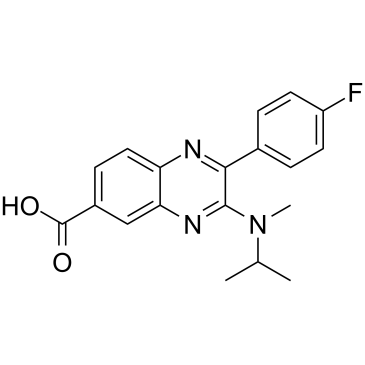| In Vivo |
BioE-1115 (1-100 mg/kg; oral gavage; daily; for 7 days; male Sprague-Dawley rats) treatment shows a dose-dependent suppression of the expression of Gpat1, Fasn and all other SREBP-1c target genes analyzed. SREBP-1 maturation in liver is also suppressed in BioE-1115 treated rats at 10, 30 and 100 mg/kg doses. A calculated measure of insulin resistance, HOMA-IR, is decreased in a dose-dependent manner by BioE-1115 administration. Hepatic and serum TAG are decreased in a dose-dependent manner by BioE-1115 administration. BioE-1115 treatment causes a significant decrease in serum glucose. Both SREBP-1c and SREBP-1a mRNA are modestly decreased at the highest doses. Neither dose of BioE-1115 causes a significant change in either liver weight or body weight[1]. Animal Model: Male Sprague-Dawley rats (12 weeks of age; 129.4 ± 0.63 g) fed with high fructose diet[1] Dosage: 1 mg/kg, 3 mg/kg, 10 mg/kg, 30 mg/kg and 100 mg/kg Administration: Oral gavage; daily; for 7 days Result: Treated with 10, 30 and 100 mg/kg, showed a dose-dependent suppression of the expression of Gpat1, Fasn and all other SREBP-1c target genes analyzed. Decreased hepatic expression of lipogenic SREBP-1c target genes, decreased serum triglycerides and partially reversed insulin resistance.
|
